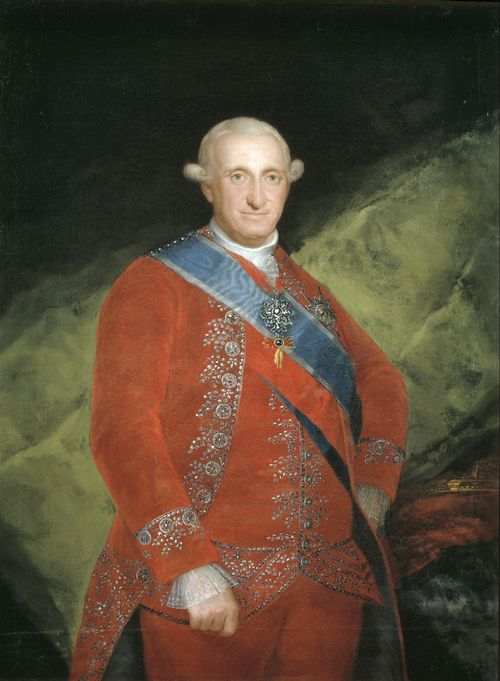Charles IV

Carlos IV by Francisco Goya (Copyright © Museo Nacional del Prado)
Charles IV (11 November 1748 – 20 January 1819) became King of Spain on the death of his father in 1788 and ruled from 1788 to 1808.
The Spain inherited by Charles IV gave few indications of instability, but during his reign, Spain entered a series of disadvantageous alliances and his regime constantly sought cash to deal with the exigencies of war. He detested his son and heir Ferdinand, who led the unsuccessful El Escorial Conspiracy and later forced Charles's abdication in March 1808, along with the ouster of his widely hated first minister Manuel de Godoy. Summoned to Bayonne by Napoleon Bonaparte, who forced Ferdinand VII to abdicate, Charles IV also abdicated, paving the way for Napoleon to place his older brother Joseph Bonaparte on the throne of Spain.
Charles III died on 14 December 1788 but the news did not reach New Spain for several months. The mint continued to strike coins with the Charles III effigy during 1788 and 1789. A royal order of 24 December 1788 added a digit to the numeral III, modifying the legend to CAROLUS III, or to CAROLUS IV. Coins with Charles IV’s portrait were not issued until 1792.
Charles IV died in 1819.
